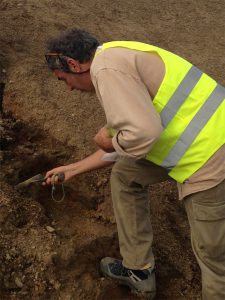
In September and November 2015, the fieldwork research of the nEU-Med staff were mainly focused to the study of the paleostratigraphy of the river Pecora, not far from the site of Vetricella. As part of the geomorphological analysis, seven soil profiles were sampled in order to recover charred wood fragments and to start a preliminary anthracological analysis. Macroscopic soil charcoal content, derived from natural or anthropogenic fires, provides information (complementary to traditional pollen-based reconstructions) about the vegetation on the Pecora basin.
In March 2016, the anthracological analysis has been carried out by the team of the Laboratory of Vegetation History and Wood Anatomy of the Department of Agriculture, University of Naples “Federico II”. The aim of this research is to reconstruct the (natural or anthropogenic) fire event linked to the sediment-filling of the river Pecora (Fig.1).
At the same time, three charred wood fragments were chemical treated in the Laboratory IRMS of the Department of Environmental Science and Technology, Second University of Naples. Later, radiocarbon dating were performed on these charcoal samples by accelerator mass spectrometry (AMS) in the LABEC of the University of Florence, belonging to the network for Cultural Heritage of the National Institute for Nuclear Physics (CHNet).


